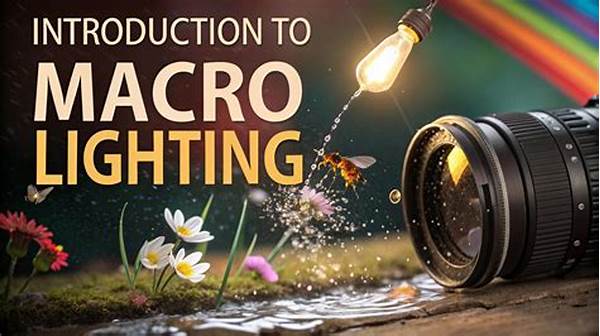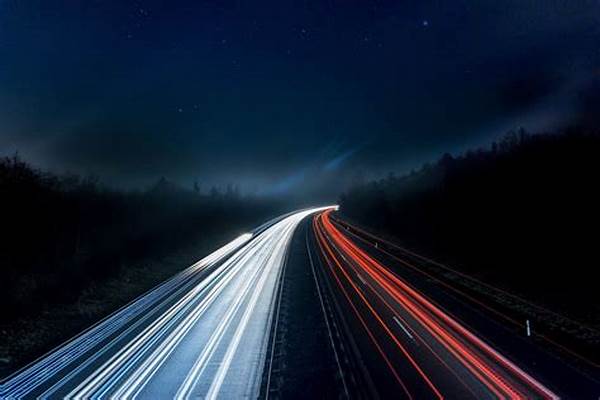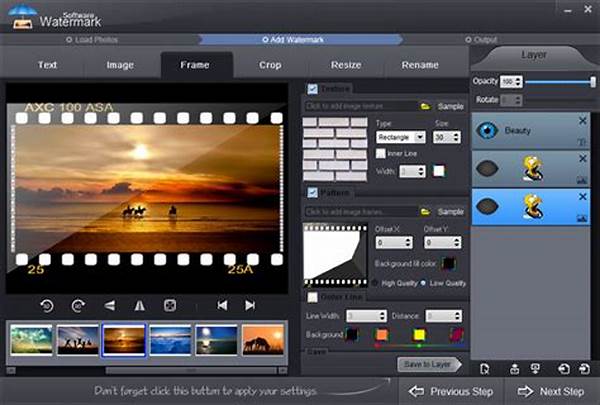Hey there, fellow photography enthusiasts! If you’re diving into the fascinating world of macro photography, you’re probably already aware that lighting can make or break your shots. Whether you’re capturing the intricate details of a flower petal or the texture of a butterfly’s wings, getting the right lighting setup is crucial. In this article, I’m here to share some awesome lighting tips for macro photography that will help you elevate your game and create stunning, detailed images that pop!
Read Now : Choosing Iso Settings For Portrait Clarity
Understanding the Importance of Lighting
When it comes to macro photography, lighting is your best friend. Unlike other photography styles, macro shots require you to focus on tiny subjects, which means that every detail matters. With a poor lighting setup, you’ll end up with underexposed, blurry images that just don’t do justice to the subject’s beauty. One key lighting tip for macro photography is to experiment with natural light. Shooting during the golden hour, for example, gives you that soft, warm glow that flatters almost any subject. But natural light isn’t always available, and that’s when artificial lighting tools come into play. By using tools like light diffusers and ring lights, you can soften shadows and highlight details without washing out the colors. Just remember, balance is key. Overly harsh lighting can ruin your photos just as quickly as too little light can.
Another essential tip is to consider the direction of your light source. Side lighting, for example, can add depth to your macro shots by highlighting textures and contrasts, making your subject appear more three-dimensional. On the other hand, backlighting can create ethereal silhouettes and highlight the translucence in things like petals or wings. Also, don’t forget about reflectors! They can help bounce light back on your subject, especially useful when dealing with harsh shadows. Playing around with these lighting tips for macro photography will help you develop a feel for what works best in different scenarios, ensuring your images stand out.
Lastly, don’t be afraid to experiment! Macro photography is all about showcasing the unseen, and sometimes the best way to do that is by breaking the conventional rules. Try using colored gels to give an artistic flair or utilize different backgrounds to see how light interacts with your subject. Remember, practice makes perfect, and the more you play with lighting, the more intuitive your skills will become. So grab your camera, try these lighting tips for macro photography, and get ready to create art that captivates anyone who sees it!
Quick Tips for Great Lighting
1. Invest in a good ring light—it offers even illumination and enhances every detail.
2. Light diffusers are game-changers; they soften harsh sunlight and reduce unwanted shadows.
3. Reflectors can help redirect light onto tricky subjects.
4. Use adjustable LED panels to control light intensity.
5. Practice shooting in different lighting conditions to master your skills.
Exploring DIY Lighting Hacks
If you’re looking to spice things up in your macro photography without breaking the bank, DIY lighting hacks are the way to go. First up, consider making your own light diffuser using everyday household items. All you need is some wax paper and a cardboard frame, and voilà, you have yourself a makeshift diffuser! This simple trick helps soften the light, ensuring that your photos don’t end up with harsh highlights and dark shadows. It’s one of those essential lighting tips for macro photography that can help you achieve a professional look without the price tag.
Another brilliant and inexpensive hack is to use aluminum foil as a reflector. Not only does it help illuminate your subject, but its reflective surface can also add some sparkle to your images, bringing them to life. Just crinkle it up a bit for added texture and let the magic happen. With a few clever tweaks and some common household items, you can create a variety of lenses and lighting effects. The best part? These hacks are super budget-friendly, making it easy for beginners to explore and enhance their lighting setup without needing fancy equipment.
Common Mistakes to Avoid
Diving into macro photography can be both exciting and a tad bit daunting, especially when it comes to mastering the lighting aspect. One of the most prevalent mistakes is relying too heavily on the camera’s built-in flash. While it might seem convenient, the direct flash often causes unwanted glare and can wash out fine details. A pro lighting tip for macro photography is to instead use external flashes or natural light to maintain the integrity of your subject. Remember, the key is subtle and balanced lighting that highlights, not overpowers.
Read Now : Artistic Portraits Using Smartphones
Another common faux pas is neglecting to adjust the white balance. In macro photography, where details are everything, the wrong color tone can be very distracting. Always take a moment to tweak the white balance settings on your camera according to your light source, whether it’s natural light or artificial lights like those nifty LEDs or ring lights. One final rookie error? Forgetting about shadows! Especially in macro shots, shadows can obscure the features you’re trying to highlight. So, always keep an eye on where those shadows are falling and adjust your light sources accordingly.
The Role of Natural Light
Capturing Nature’s Own Light Show
Using natural light as a primary source can elevate your macro photography to a new level of enchantment. It’s not just about snapping a photo—it’s about capturing the intricate dance of light and shadow. When you use natural light effectively, especially during the golden hours, your macro shots can reveal details and colors that artificial lighting often misses. This is why understanding how to manipulate natural light is a crucial component of lighting tips for macro photography.
Position yourself at various angles around your subject to see how the natural light shifts. Sometimes, simple repositioning can make all the difference, transforming an ordinary image into something extraordinary. Experimenting with the intensity and direction of natural light can yield surprising results. So, step outside with your gear, embrace the natural light, and watch your macro photography blossom. Remember, practice is key, and each shot helps you refine your lighting skills further.
Playing with Shadows
Lighting tips for macro photography often emphasize controlling light, but shadows can be just as important in creating stunning visuals. By manipulating shadows, you can add depth and intrigue to your images, making them stand out even more. Consider using flagged strobes or hand-crafted cutouts to cast distinct shapes and lines. These creative shadows can add an artistic layer to your photos, drawing the viewer’s eye and engaging their imagination.
Just remember, when you’re incorporating shadows into your macro photography, strive for balance. Too much shadow can obscure your subject, while too little can leave your images looking flat. Practice makes perfect, and trying different shadow techniques will only strengthen your photography repertoire.
Final Thoughts
Lighting is one of the most significant aspects of achieving good macro photography results. As you’re out there capturing the tiny wonders of the world, remember that lighting can either enhance your shot or detract from it. By applying these varied lighting tips for macro photography, you’re setting yourself up to capture truly magnificent images.
Don’t forget, photography is a learning journey. You’ll learn and grow with each shot you take. So give yourself room to experiment and explore all the wonderful facets of lighting in macro photography. Who knows? The next beautiful and intricate image could be just a click away with the right lighting tips for macro photography!
Achieving Mastery in Lighting
The journey to mastering lighting in macro photography is filled with experimentation and creativity. Each time you pick up your camera, you have the opportunity to try something new. It could be adjusting your angles, playing with shadows, or using a different lighting source altogether. The possibilities are endless.
Remember, there’s no universal right or wrong. What works for one subject or scenario may not work for another. The key is to keep learning from your experiences and refining your skills. Use these lighting tips for macro photography as a foundation, but don’t hesitate to let your creativity lead the way to discovering new photographic horizons.



